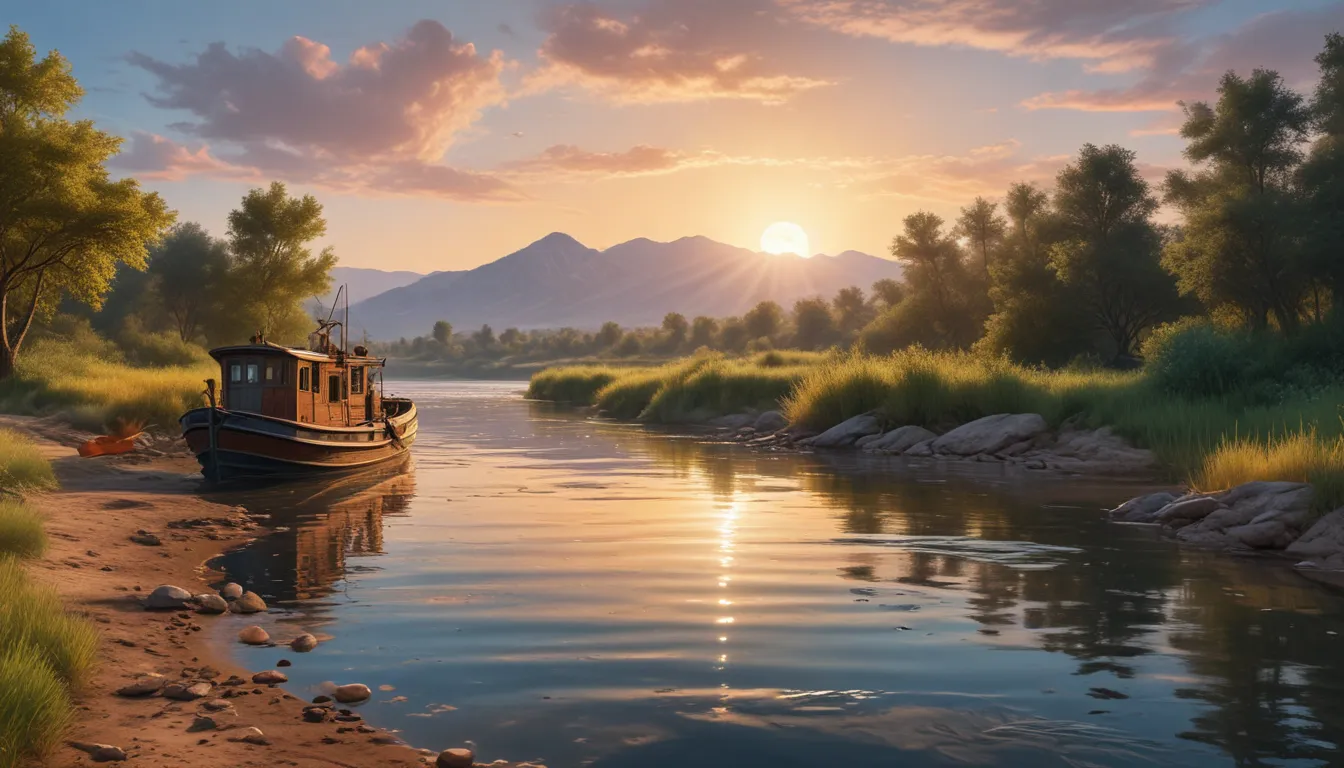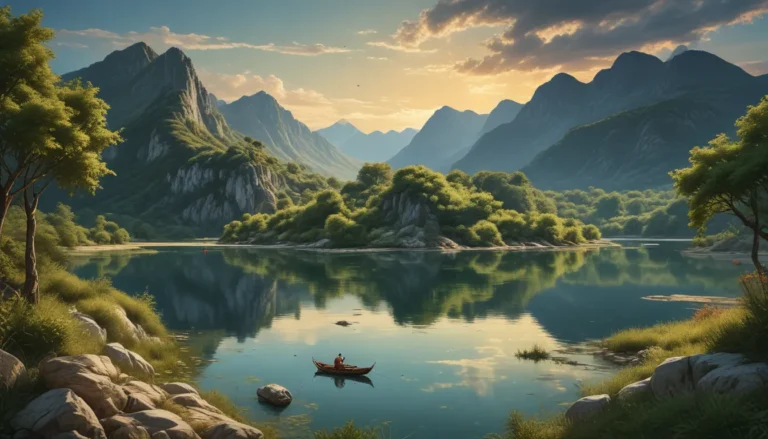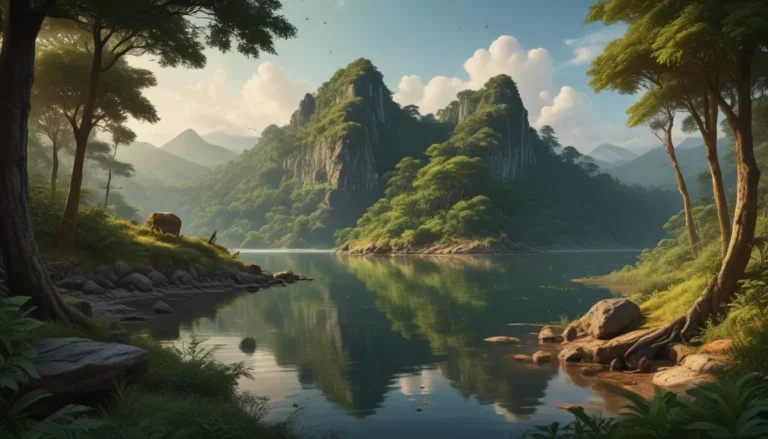The pictures we use in our articles might not show exactly what the words say. We choose these pictures to make you interested in reading more. The pictures work together with the words but don’t take their place. The words still tell you the important facts.
Central Asia is home to the incredible Amu Darya, a majestic waterway with a rich history and significant impact on the region. From its origins in the Pamir Mountains to its terminal basin in the Aral Sea, the Amu Darya has shaped landscapes, supported wildlife, and sustained ancient civilizations for centuries. Join us as we delve into the wonders of the Amu Darya and uncover nine unbelievable facts that showcase its grandeur and importance.
The Mighty Amu Darya: A Vital Water Resource
The Amu Darya, also known as the Oxus River, stretches over 2,400 kilometers, making it one of the longest rivers in Central Asia. Flowing through countries like Tajikistan, Afghanistan, Turkmenistan, and Uzbekistan, the Amu Darya serves as a vital water resource for the region, supporting agriculture, irrigation, and hydroelectric power generation.
Ancient Civilization Flourished Along its Banks
The banks of the Amu Darya have witnessed the rise and fall of ancient civilizations, playing a significant role in the development of the Bactria-Margiana Archaeological Complex. This complex thrived around 2200-1700 BCE, showcasing the importance of the river in shaping human history and culture in the region.
Home to Unique and Diverse Wildlife
The Amu Darya is not only a lifeline for human civilizations but also a sanctuary for a diverse range of wildlife. Critically endangered species like the Bukhara deer and the rare goitered gazelle call the river and its surrounding wetlands home, highlighting the importance of preserving this ecosystem for future generations.
The Amu Darya and the Ancient Silk Road
The Amu Darya played a crucial role in facilitating trade along the ancient Silk Road, connecting East Asia with the Mediterranean region. Goods like silk and spices traveled through these river corridors, showcasing the river's strategic importance in shaping trade and cultural exchanges in the region.
Significant Source of Water for the Aral Sea
As a significant source of water for the Aral Sea, one of the largest saline lakes in the world, the Amu Darya plays a crucial role in sustaining this unique ecosystem. However, excessive water diversion for irrigation has led to a reduction in the river's flow, contributing to the shrinking of the Aral Sea and posing ecological challenges for the region.
Rich Oil and Gas Reserves Along the Amu Darya
The Amu Darya basin is known for its rich oil and gas reserves, with several fields discovered along the river. These resources contribute to the energy production of the surrounding countries, showcasing the economic importance of the river beyond its vital role as a water resource.
Fertile Agricultural Lands Along the River
For centuries, the fertile lands along the Amu Darya have been used for agriculture, enabling the cultivation of crops like cotton, wheat, and fruits. The river's essential water supply for irrigation has transformed arid lands into productive oases, supporting local communities and economies.
Addressing Ecological Challenges and Conservation Efforts
The Amu Darya faces numerous ecological challenges, including pollution, habitat destruction, and water scarcity. Efforts are underway to address these issues and conserve the river's ecosystem for future generations. Sustainable practices and conservation initiatives are crucial to ensuring the long-term viability of this vital waterway.
Conclusion: Celebrating the Marvels of the Amu Darya
In conclusion, the Amu Darya is a marvel of nature with a rich history and incredible attributes that showcase its significance in shaping landscapes, sustaining wildlife, and supporting human civilizations. From its ancient roots to its modern-day challenges, the river continues to inspire awe and appreciation for the wonders of our natural world. Let us continue to explore, learn, and marvel at the incredible wonders of the Amu Darya and other natural beauties that grace our planet.
FAQs: Uncovering More About the Amu Darya River
-
How long is the Amu Darya river?
The Amu Darya river is approximately 2,400 kilometers long, making it one of the longest rivers in Central Asia. -
What countries does the Amu Darya river flow through?
The Amu Darya river flows through Tajikistan, Afghanistan, Turkmenistan, and Uzbekistan. -
Is the Amu Darya river important for agriculture?
Yes, the Amu Darya river is a crucial water source for irrigation and sustains agriculture in the surrounding regions. -
Are there any endangered species living in the Amu Darya river?
Yes, the river is home to several endangered species, such as the Bukhara deer and the goitered gazelle. -
Can you fish in the Amu Darya river?
Fishing is possible in some sections of the river, but it is important to comply with local regulations and ensure sustainable practices. -
Does the Amu Darya river have cultural significance?
Absolutely. The Amu Darya river has been an integral part of the culture and history of the region, with ancient civilizations flourishing along its banks.
Join us in celebrating the wonders of the Amu Darya as we uncover its incredible history, significance, and impact on the region. Explore the vital role of rivers in shaping human civilizations and the importance of conservation efforts to preserve these natural treasures for future generations. Embrace the beauty and power of the Amu Darya as we continue to learn, appreciate, and protect the wonders of our planet's waterways.






